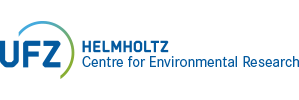Publication Details |
| Category | Text Publication |
| Reference Category | Journals |
| DOI | 10.1016/j.jhazmat.2025.139791 |
Licence  |
|
| Title (Primary) | UV weathering alters toxicity and chemical composition of consumer plastic leachates |
| Author | Nabi, D.; Carmona, E.
|
| Source Titel | Journal of Hazardous Materials |
| Year | 2025 |
| Department | ETOX; EXPO |
| Volume | 498 |
| Page From | art. 139791 |
| Language | englisch |
| Topic | T9 Healthy Planet |
| Supplements | Supplement 1 Supplement 2 |
| Keywords | Plastic-associated chemicals; Plastic leachates; UV weathering; Cell-based bioassays; Chemoassays; High-resolution mass spectrometry; Transformation products |
| Abstract | Plastics release complex mixtures of partially toxic substances into the environment, particularly following UV-induced weathering. Using integrated chemoassays, cell line bioassays, and chemical profiling, we assessed leachates from eight types of consumer plastic products following accelerated UV weathering equivalent to eight months of natural solar weathering in temperate regions to identify key contributors to leachate toxicity. Chemoassays, used as proxies for protein damage, showed UV-induced reactive toxicity, which increased by up to 82 % depending on plastic type. Cell-based bioassays revealed that UV exposure enhanced cytotoxicity up to 13-fold, especially for polyethylene leachates, in liver, skin, lung, and breast cancer cell lines, reflecting cell-specific vulnerabilities. UV exposure substantially altered the chemical composition of leachates shown by liquid chromatography -high resolution mass spectrometry (LC-HRMS) screening which identified 11 target-, 12 suspect-, and 90 non-target chemicals. Furthermore, UV exposure promoted the formation of more bioavailable and hazardous transformation products compared to the dark controls. The increased toxicity was primarily linked to the release and transformation of organic plastic-associated chemicals rather than microplastics or metal(loid)s. Overall, these findings highlight UV weathering as a critical driver of enhanced plastic leachate toxicity and emphasize the need for comprehensive chemical and toxicological assessments in environmental risk evaluations of plastics. |
| Persistent UFZ Identifier | https://www.ufz.de/index.php?en=20939&ufzPublicationIdentifier=31367 |
| Nabi, D., Carmona, E., Menger, F., Römerscheid, M., Lips, S., Beck, A.J., Böhme, A., Joerss, H., Jahnke, A., Tasdemir, D., Achterberg, E.P. (2025): UV weathering alters toxicity and chemical composition of consumer plastic leachates J. Hazard. Mater. 498 , art. 139791 10.1016/j.jhazmat.2025.139791 |
|
